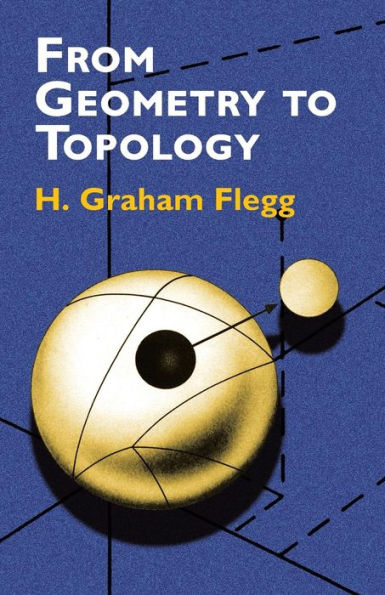From Geometry to Topology
This excellent introduction to topology eases first-year math students and general readers into the subject by surveying its concepts in a descriptive and intuitive way, attempting to build a bridge from the familiar concepts of geometry to the formalized study of topology. The first three chapters focus on congruence classes defined by transformations in real Euclidean space. As the number of permitted transformations increases, these classes become larger, and their common topological properties become intuitively clear. Chapters 4–12 give a largely intuitive presentation of selected topics. In the remaining five chapters, the author moves to a more conventional presentation of continuity, sets, functions, metric spaces, and topological spaces. Exercises and Problems. 101 black-and-white illustrations. 1974 edition.
"1102544038"
This excellent introduction to topology eases first-year math students and general readers into the subject by surveying its concepts in a descriptive and intuitive way, attempting to build a bridge from the familiar concepts of geometry to the formalized study of topology. The first three chapters focus on congruence classes defined by transformations in real Euclidean space. As the number of permitted transformations increases, these classes become larger, and their common topological properties become intuitively clear. Chapters 4–12 give a largely intuitive presentation of selected topics. In the remaining five chapters, the author moves to a more conventional presentation of continuity, sets, functions, metric spaces, and topological spaces. Exercises and Problems. 101 black-and-white illustrations. 1974 edition.
From Geometry to Topology
This excellent introduction to topology eases first-year math students and general readers into the subject by surveying its concepts in a descriptive and intuitive way, attempting to build a bridge from the familiar concepts of geometry to the formalized study of topology. The first three chapters focus on congruence classes defined by transformations in real Euclidean space. As the number of permitted transformations increases, these classes become larger, and their common topological properties become intuitively clear. Chapters 4–12 give a largely intuitive presentation of selected topics. In the remaining five chapters, the author moves to a more conventional presentation of continuity, sets, functions, metric spaces, and topological spaces. Exercises and Problems. 101 black-and-white illustrations. 1974 edition.
This excellent introduction to topology eases first-year math students and general readers into the subject by surveying its concepts in a descriptive and intuitive way, attempting to build a bridge from the familiar concepts of geometry to the formalized study of topology. The first three chapters focus on congruence classes defined by transformations in real Euclidean space. As the number of permitted transformations increases, these classes become larger, and their common topological properties become intuitively clear. Chapters 4–12 give a largely intuitive presentation of selected topics. In the remaining five chapters, the author moves to a more conventional presentation of continuity, sets, functions, metric spaces, and topological spaces. Exercises and Problems. 101 black-and-white illustrations. 1974 edition.
15.95
In Stock
5
1

From Geometry to Topology
208
From Geometry to Topology
208
15.95
In Stock

Product Details
| ISBN-13: | 9780486419619 |
|---|---|
| Publisher: | Dover Publications |
| Publication date: | 09/04/2001 |
| Series: | Dover Books on Mathematics Series |
| Pages: | 208 |
| Product dimensions: | 5.50(w) x 8.50(h) x 0.44(d) |
From the B&N Reads Blog
